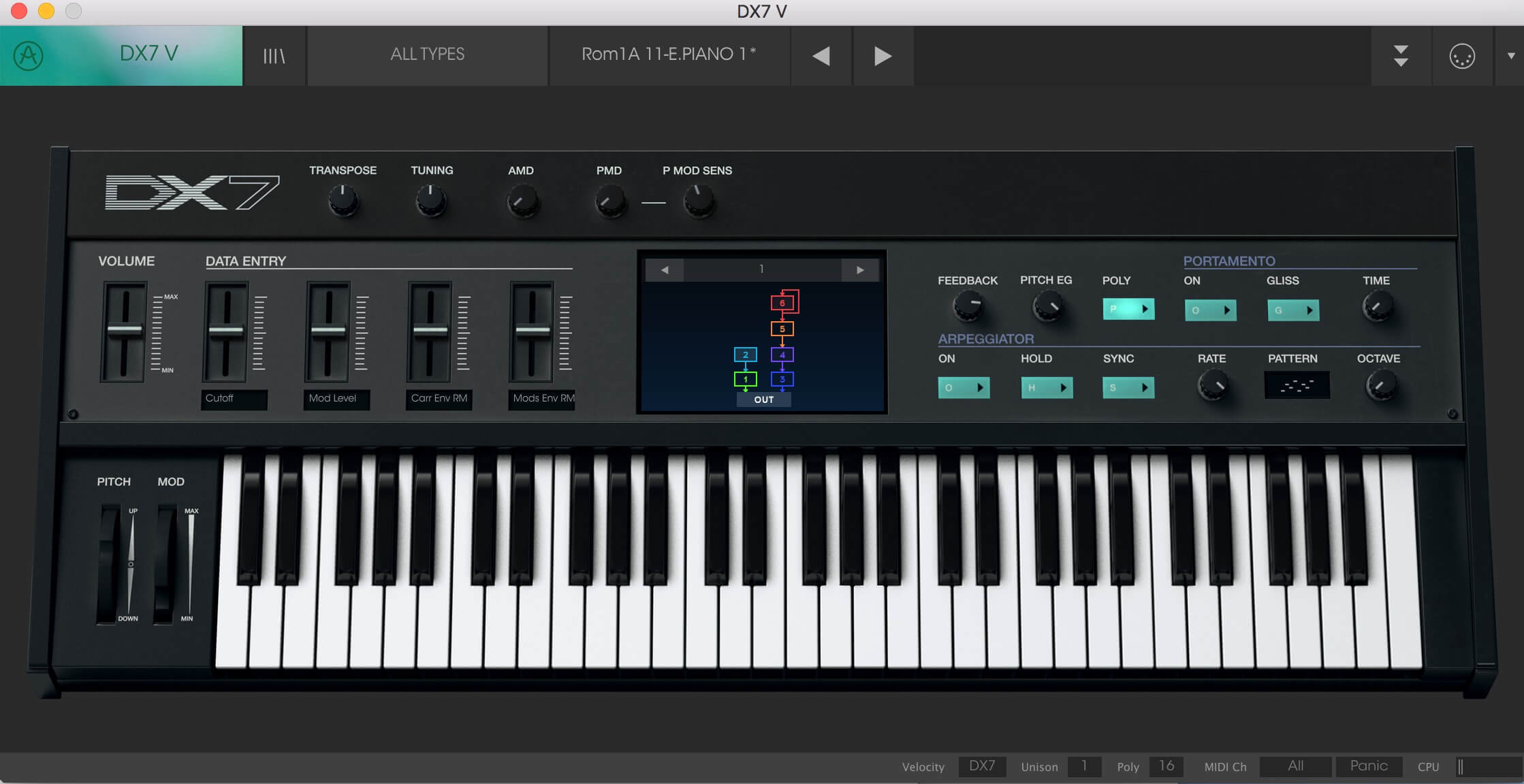
Features:
- The famous YAMAHA DX7 returns as a totally modeling-based soft synth
- Equipped with all the features we wished we had back in the day
- Very easy to operate FM engine
The Return of the Most Famous FM Synth
Arturia, well-known for its software reincarnations of many famous vintage synths, has released an FM synth as part of its newest collection. Not just any synth, this digital synthesizer was a global hit in the 1980s, producing FM timbres nobody had heard before. Of course we're talking about the DX7. The early 80s saw analog synths as the major players, but thanks to the introduction of the clear, realistic sounds of the DX7, it is not too much to say that synthesizers were finally recognized as a major instrument. The DX7 truly impacted the world of musical instruments.
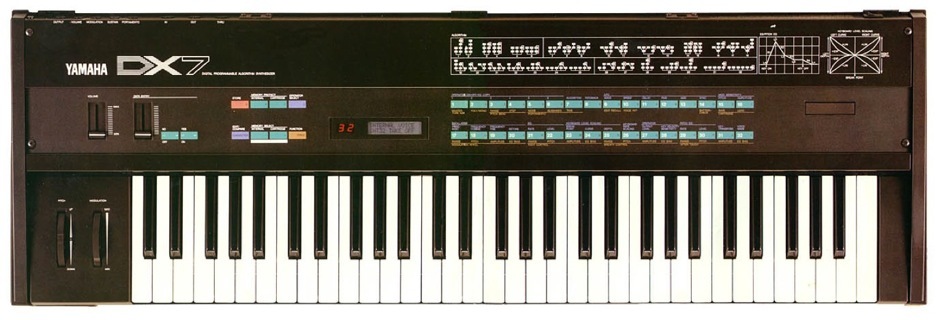
In the early 80s, pre-sampler, pre-PCM era, analog synths dominated. However, in addition to the 'analog' sounds which are popular even today, there were times when realistic sounds, or at least sounds that were fairly similar to those of real instruments, were in demand.
However, analog synths were not good at making sounds that had loads of harmonics (like metallic or bell sounds), or sounds that had strong, sharp attack transients like percussion instruments and so on. We clearly remember how shocked we were when we heard sounds like these included among the presets of the DX7.
For a more detailed look at the history of FM and Yamaha, have a look at our YAMAHA DX5 Review
The DX7 V
DX7 Basic Functions
Features of the DX7 V include:
- 6-operator, 32-algorythm FM synthesis as on the original DX7
- All original DX7 parameters
- DX7 System Exclusive Data import
- Original DX7 presets ROM1A-B, ROM2A-B
- FM-based engine (NOT sample-based)
Because the DX7 V is 6-operator, 32-algorythm, and can handle all original parameter data, DX7 sysex data can be imported with no problem. In essence, this means that you are dealing with a software re-creation of the DX7. Because you can use the sound program data itself from sounds you've painstakingly produced on a DX7, you no longer need to worry about hardware maintenance or the risk of a breakdown.
Furthermore, among the 436 preset sounds, a number of original DX7 patches have been included, which is something we're happy about.
VERY easy-to-use interface
When the DX7 hit the market, people were of two opinions regarding the front panel—which had zero knobs to be found; just a 2-line digital LCD, a 2-digit LED, one data slider, and a handful of printed push-buttons. One the one hand, it was seen as advanced and innovative, but on the other, as prohibitive to easy editing as use.
Moreover, nobody really had any idea how to edit FM to get those sounds we heard. In order to understand the peculiarities of FM, and to get anywhere near the sounds you had in mind, a real investment of time (and blood, sweat and tears) to learn the intricacies of FM was an unavoidable requirement. Add the difficult-to-edit front panel to the equation, and it became a real struggle to deal with FM.
Because of all of this and more, a third-party market emerged which saw the development of editor and librarian software, and sound vendors which sold sounds as system exclusive data.
With the DX7 V though, parameter access and editing is very smooth and stress-free. The design of the user interface has obviously been given a HUGE amount of thought, and it is really easy to use. For people about to embark on the study of the DX7 and/or FM synthesis, this software is a perfect match.
New Features!
While being painfully faithful to the original, the DX7 V includes new features too. By making the most of these newly added features, the original sounds can be revisited and reworked, making them even more rich than before.
25 Waveforms!
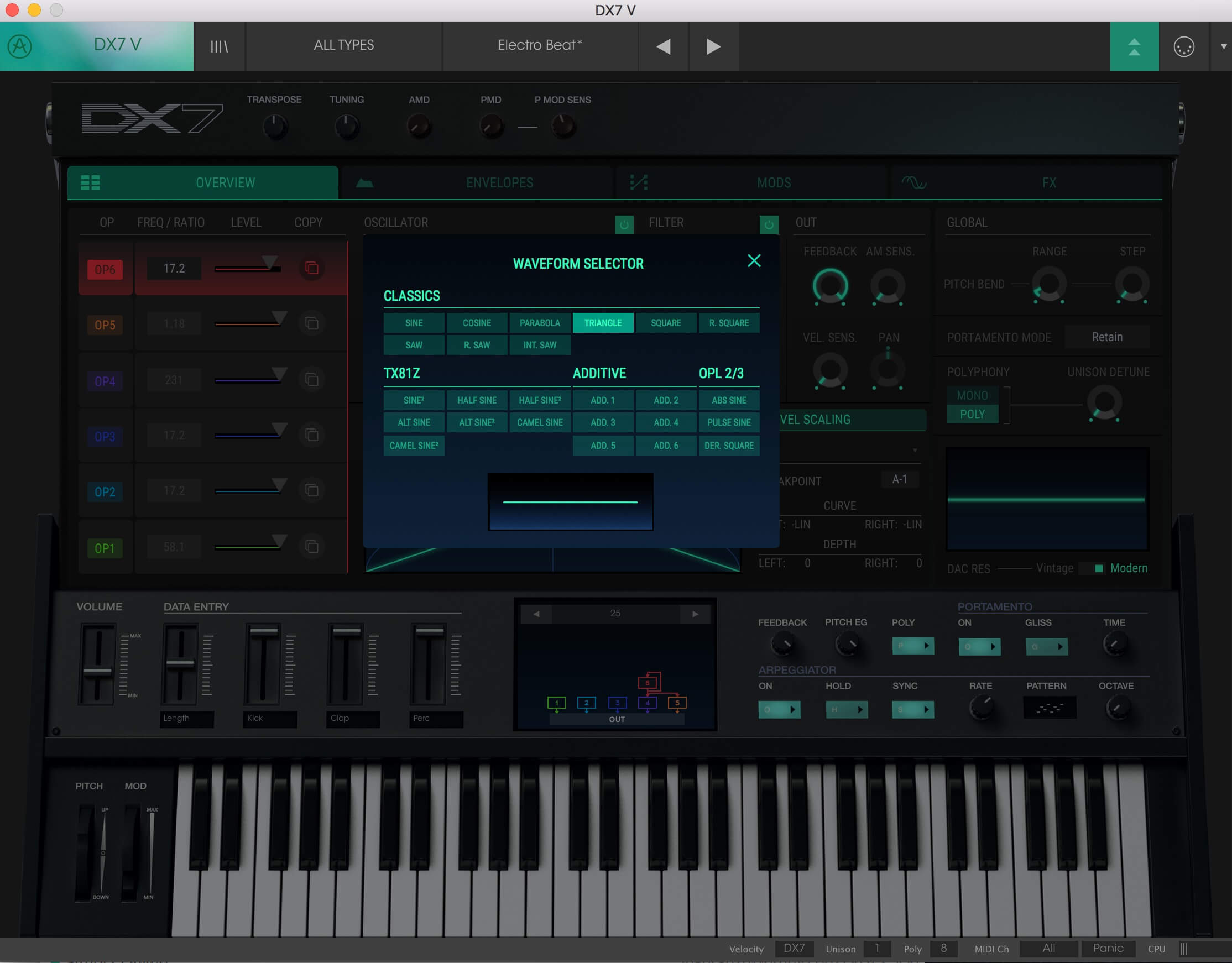
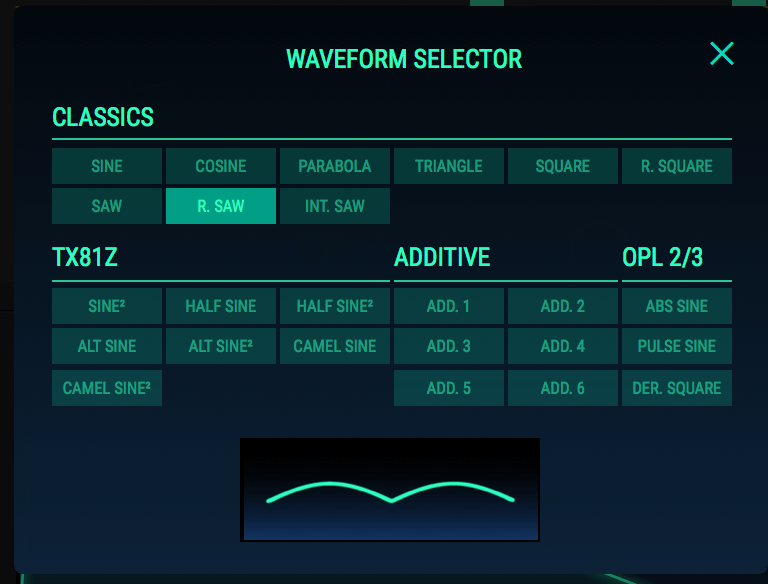
With later Fm synths such as the THANKS!81Z, SY series, and FS1R, users could set operators to waveforms other than sine. The DX7 V follows suit, and offers a selection of 25 additional waveforms, so besides modulating sine waves against each other, a multiple of variations is possible. And because there's an oscilloscope embedded within the software, you can get visual feedback while editing.
Multi-mode Filter and Feedback PER Operator!
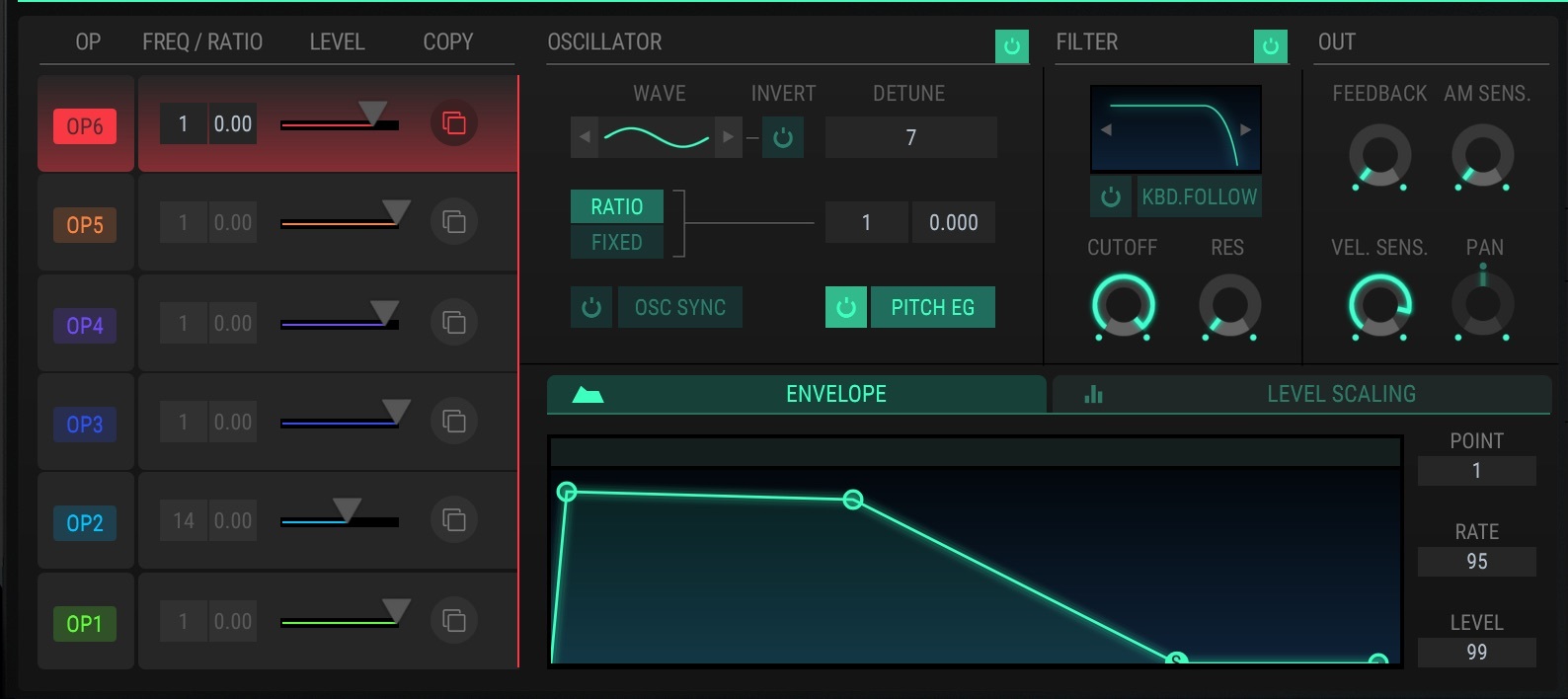
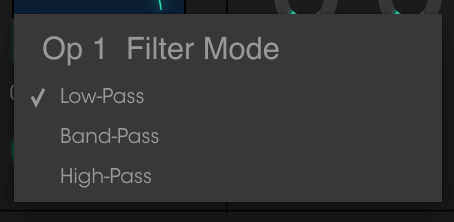
The SY series and FS1R saw the addition of a Filter. By putting a filter in an FM engine, it became possible to edit and sculpt sounds in the same way as with analog synths, instead of having to edit carrier output levels and whatnot as you would with a standard FM synth. Not including a filter caused a huge stir back when the DX7 was released.
The DX7 V has one filter per each of the 6 operators, for a total of six filters. Each filter can be set to Low-Pass, Band-Pass, or High-Pass. As this means you can put a filter on each of the carriers and/or output operators, the variation of sounds possible has increased exponentially.
32-voice Polyphonic with Unison Mode
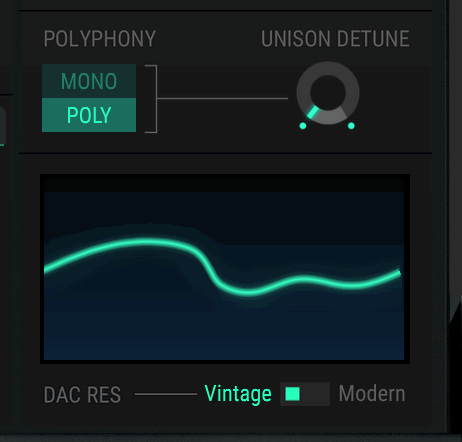
The original DX7 had 16-voice polyphony, which has been doubled to 32 on the DX7 V. Unison Mode was added with the DX7II, and on the DX7 V we find a 4-voice Unison Mode with Detune. With this enabled, you can get some seriously FAT sounds and still have 8-voice polyphony!
DAC RES:Vintage Mode??
The DAC (Digital Audio Converter) on the original DX7 was 12bit, and as a result, there was a lot of noise. However, the roughness added a certain amount of flavor, and fatness, to the sound. In today's world of hi-fidelity PCs and digital devices, the roughness of the DX7's DACs is a no-no. Nevertheless, the DX7 V comes with a Vintage mode, which re-creates the original DX7's 12-bit DACs.
The increase in digital precision doesn't stop at the DACs either. The DX7's velocity sensitivity was handled differently, with a max value of 100. As you all probably know, the MIDI standard has 127 as the maximum value. When set to Vintage, you can re-create all the nuances you did with the original DX7. When set to Modern, you get clean DACs and a different, fuller velocity response. The folks at Arturia really outdid themselves with this!
Four FX Slots
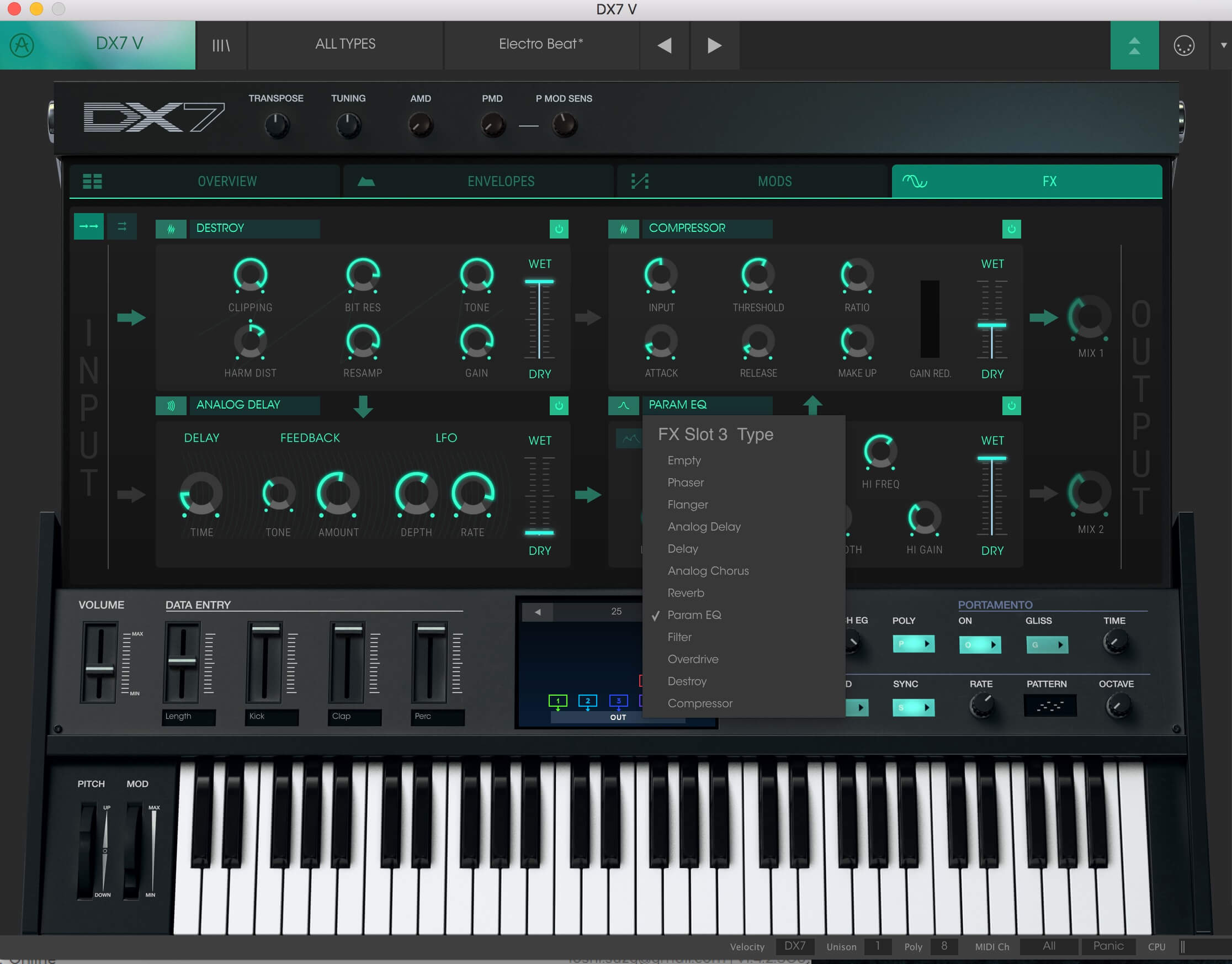
Back in the 80s, when playing or recording a DX7 or an analog synth, it was nearly impossible to get a sound that was really spacious or deep without using external effects processors. Widely used effects include modulation-based ones such as chorus, flanger and so on, and spacial effects like reverb and delay.
The DX7 V has four effects slots, kind of a given today. Each slot can be set to one of eleven different types of processor. Thanks to these effects, you can add the right amount of polish to your FM sounds.
Arpeggiator
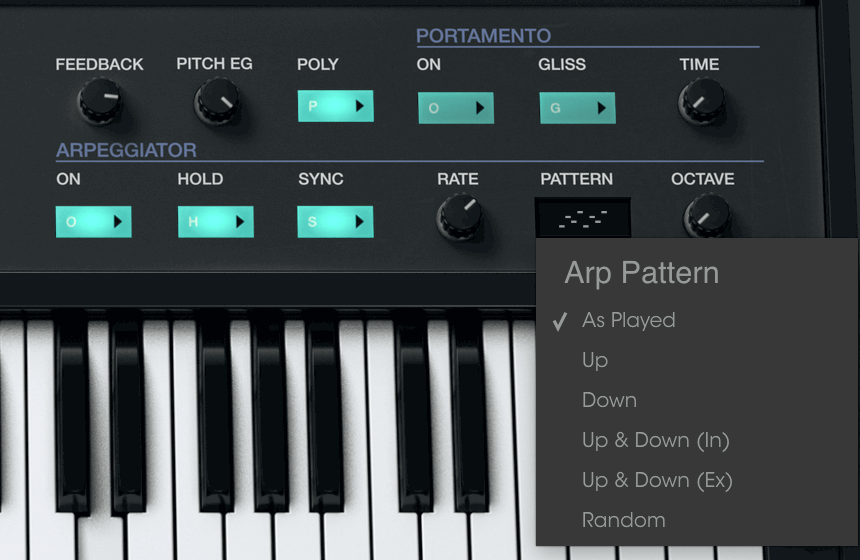
This is also a given with any software synth package, as well as being a feature found on most new synths today. For sounds FM is suited to, such as metallic or percussive sounds, having an arpeggiator is a truly welcome feature. And, because the features are basically the same as you'd find on a standard arpeggiator, it's no problem to jump right in and use without having to read the manual.
Advanced Modulation Matrix and Step Sequencer
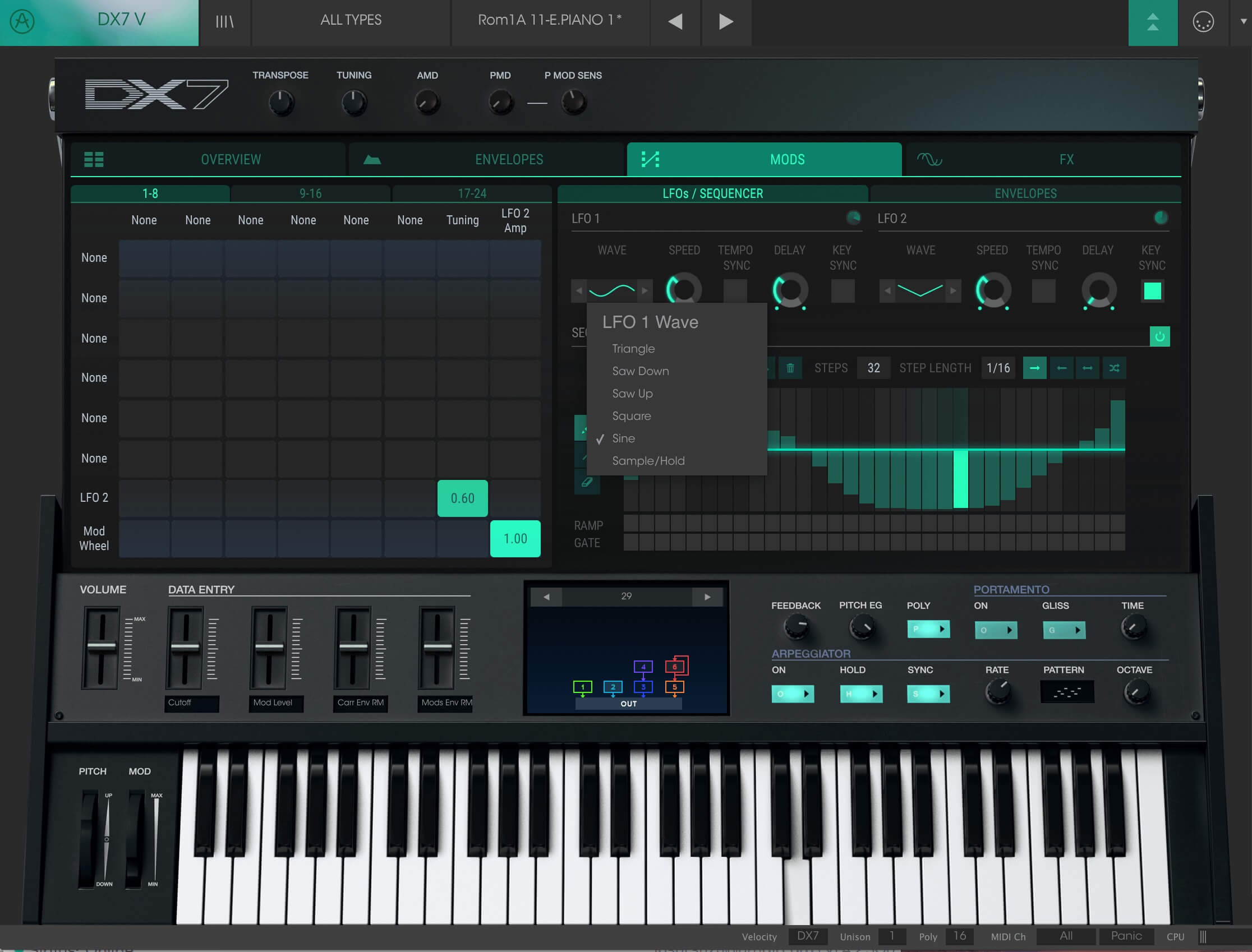
A Modulation Matrix allows the user to choose modulation sources and destinations. These are easy to use as you can visually see what the routing is. With the DX7 V, you can select the Step Sequencer as a source and route it to things like Operator Pitch and Level, or Feedback amount, for some really sick, even morbid sounds. Of course, step data (length, step on/off, etc.) can all be entered quickly and easily with a mouse.
Envelopes
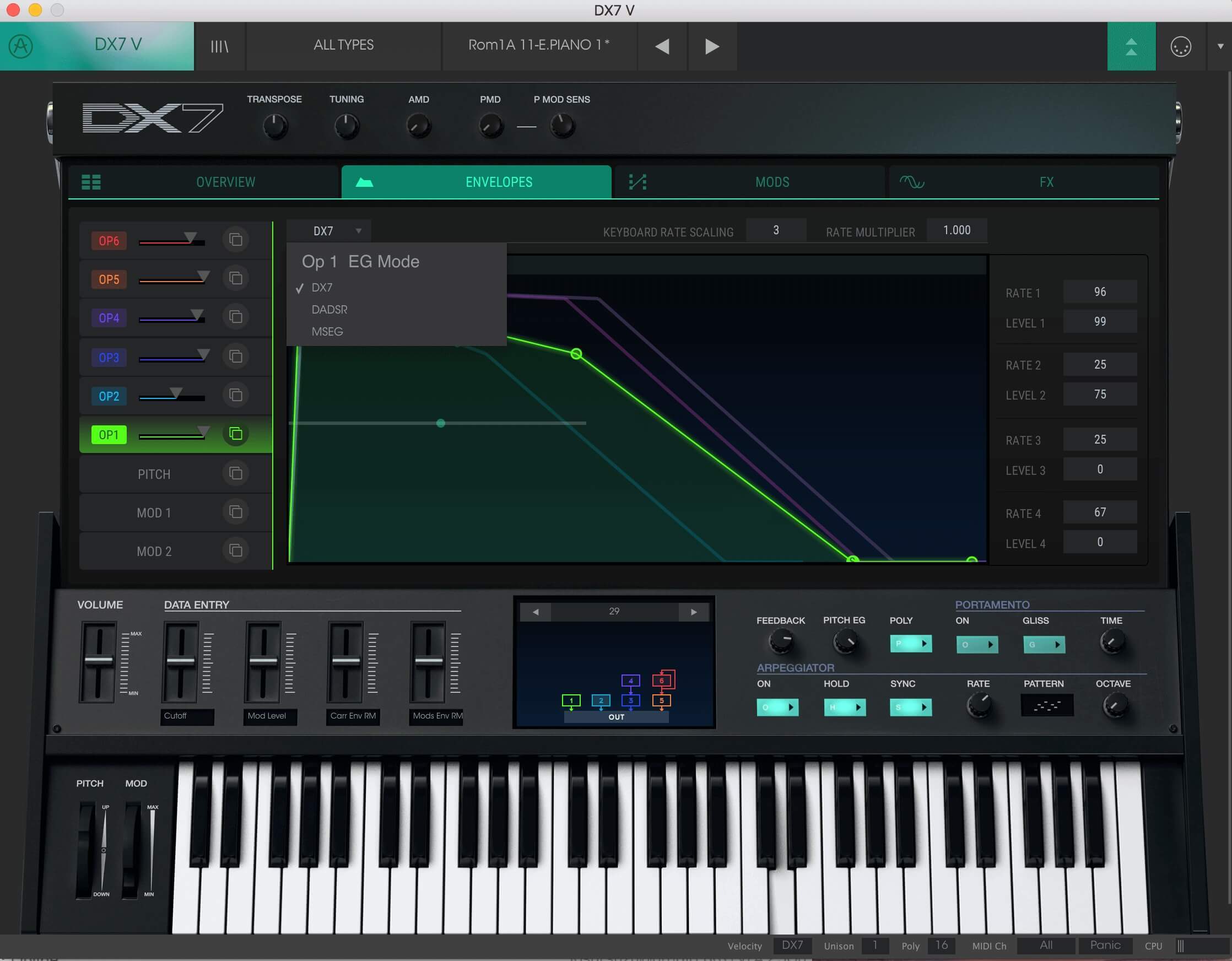
The Envelopes on the DX7 were very hard to understand, as everything was represented with numbers. The envelopes on the DX7 V are graphical, and easy to set. For Envelope Modes, you have three options for each operator: DX7 Mode, DADSR Mode, and MSEG Mode.
There are additional envelopes too, one for pitch and two for modulation. Of course, these envelopes can be easily edited by clicking and dragging points around with the mouse.
Preset Browser
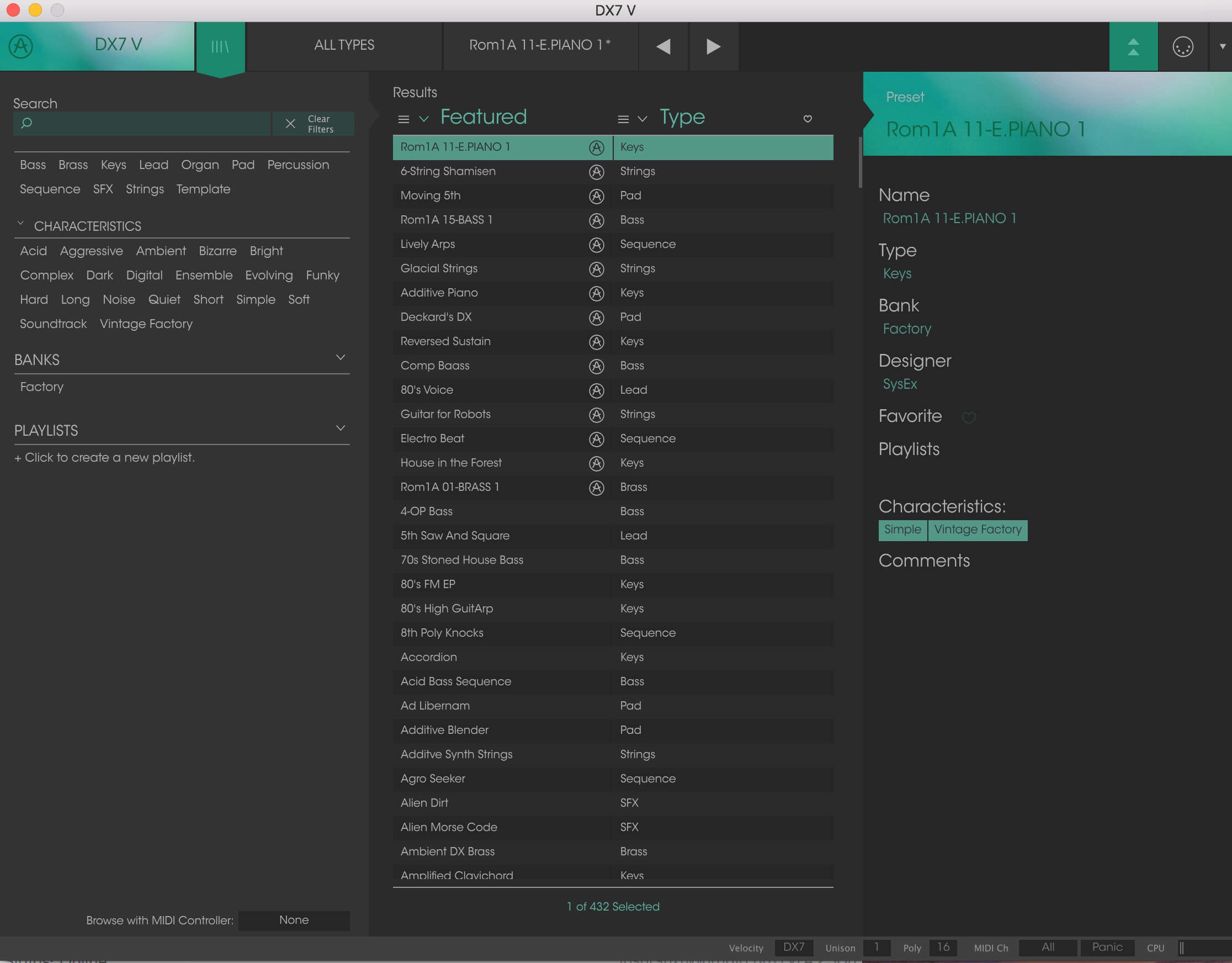
This is a shared interface among all current versions of Arturia's new software synths. You can search for sounds based on a variety of options including category and type, so this is a welcome, easy to use addition.
Use with Analog Lab 3
Because the DX7 V is modeled on the original DX7, it doesn't include a Dual Mode as found on the DX1, DX5 or other newer FM synths and sound modules.
What the Dual Mode did was sacrifice polyphony for stacked or layered voices. Back in the day, this feature was responsible for very rich Electric Piano sounds, pad sounds with metallic attacks and so on.
Not having Dual Mode with the DX7 V doesn't present a real problem, as there is a workaround. With ANALOG LAB, just fire up two instances of the DX7 V and that's all there is to it. Also, you're not limited to just using the DX7 V! You could layer a piano sound with an analog synth pad sound, and build a layered sound. It's so easy to select sounds and build a multi, and save your own original sounds, and a such we HIGHLY recommend Analog Lab 3 if you own other Arturia soft synths.
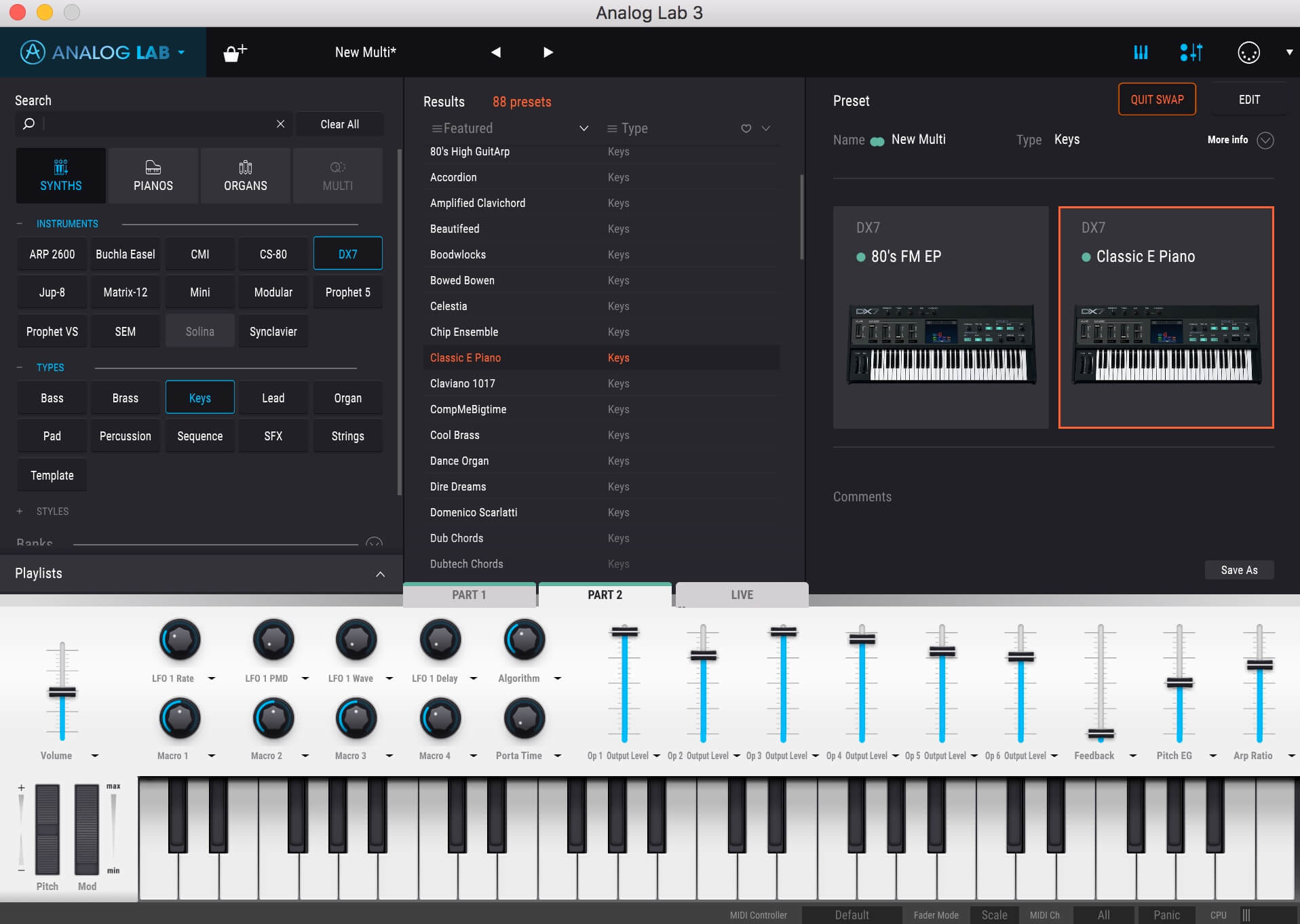
Demo & Review Video
Sales Info (Japan)
製品情報
ARTURIA V Collection 6
ARTURIA DX7 V
ARTURIA ANALOG LAB 3
パッケージ販売
ダウンロード販売
by musictrack


